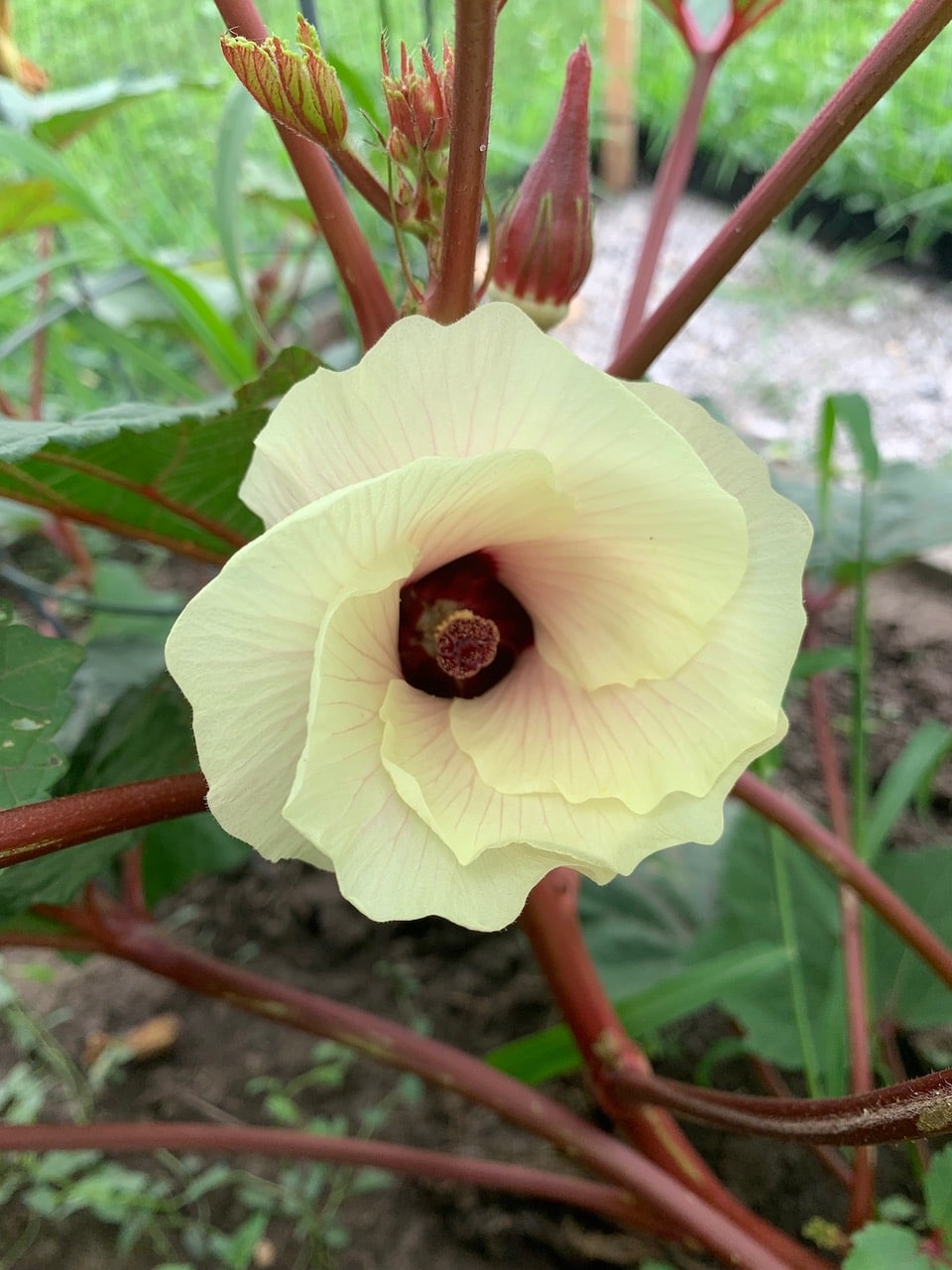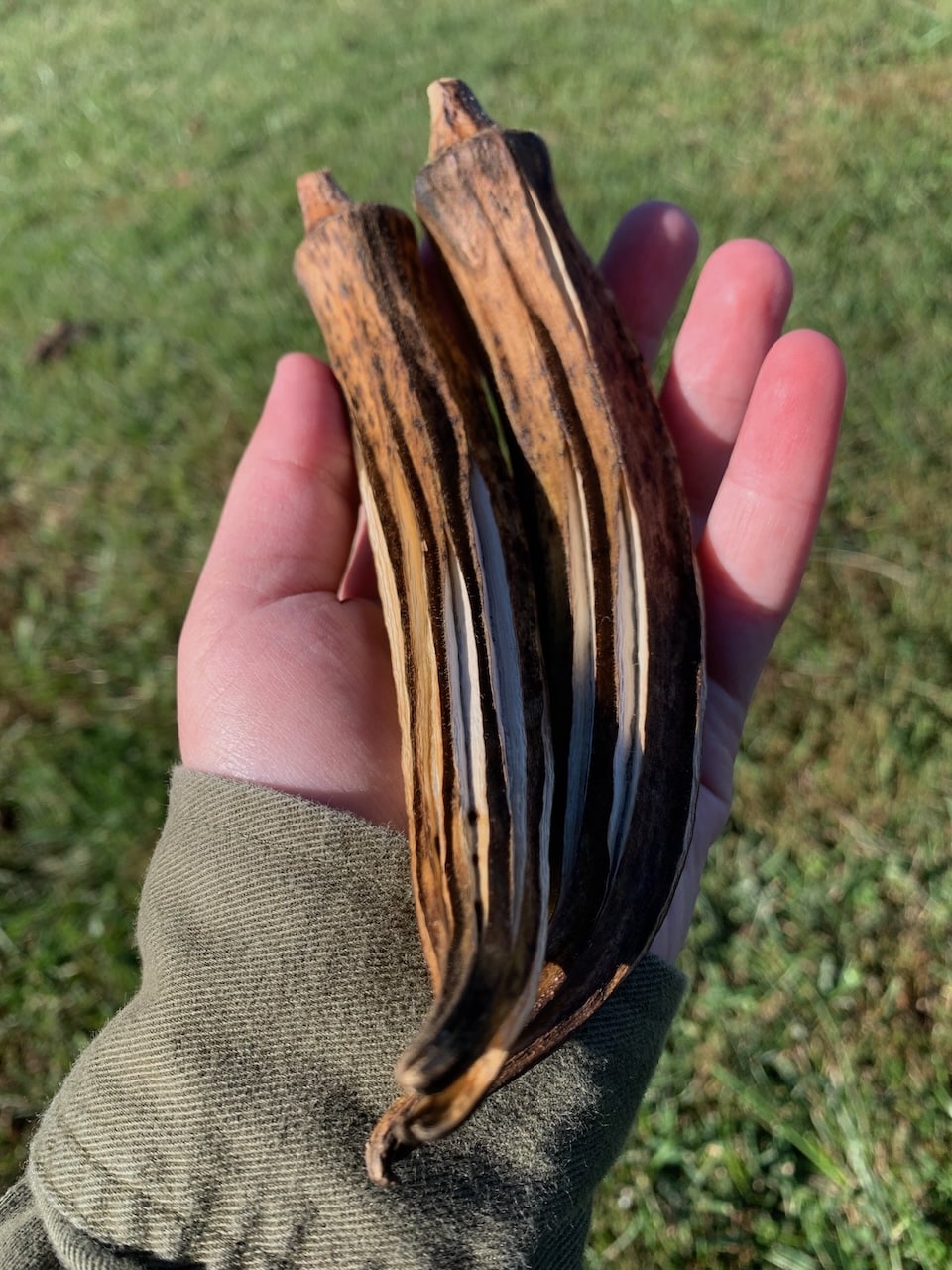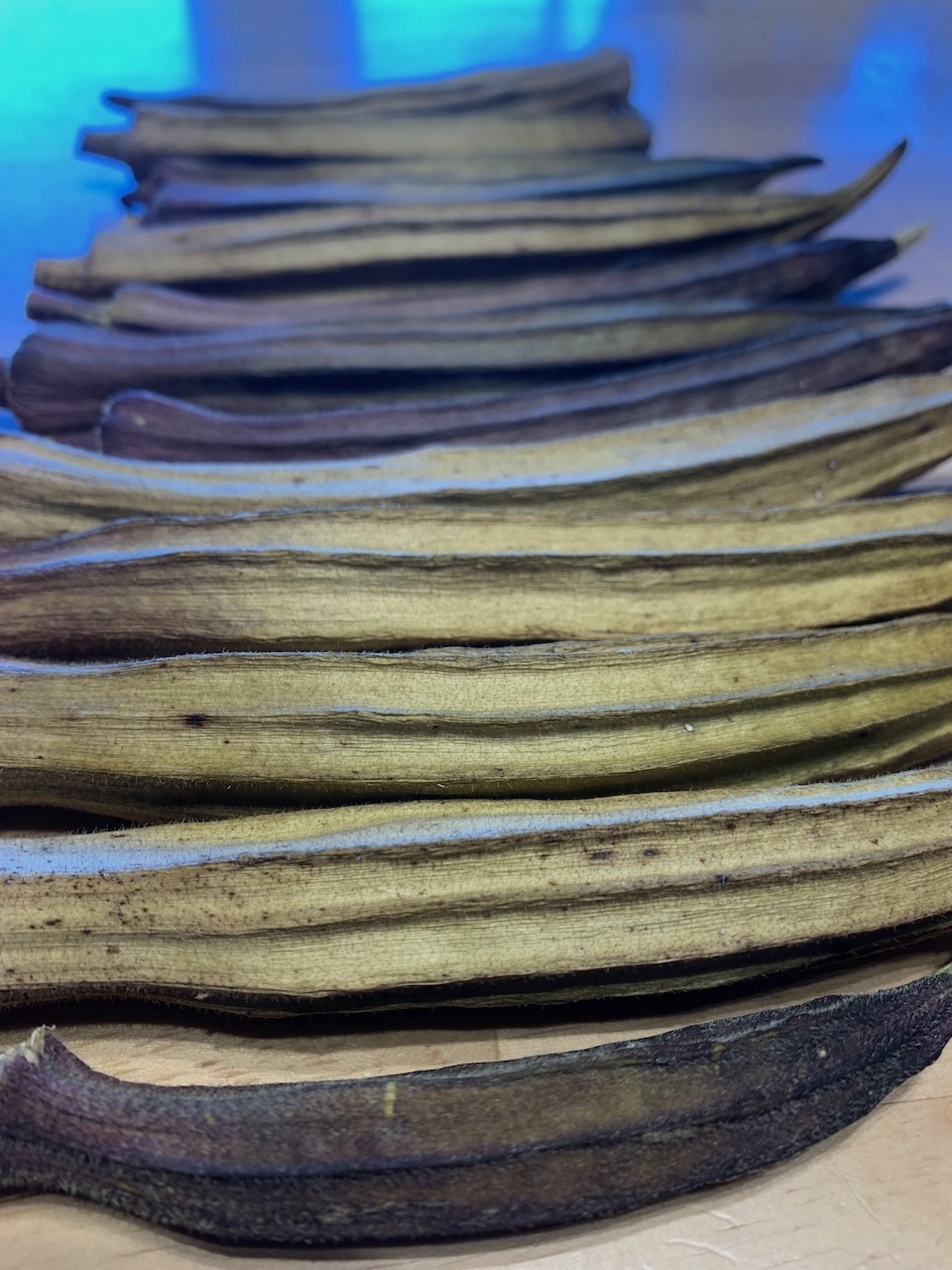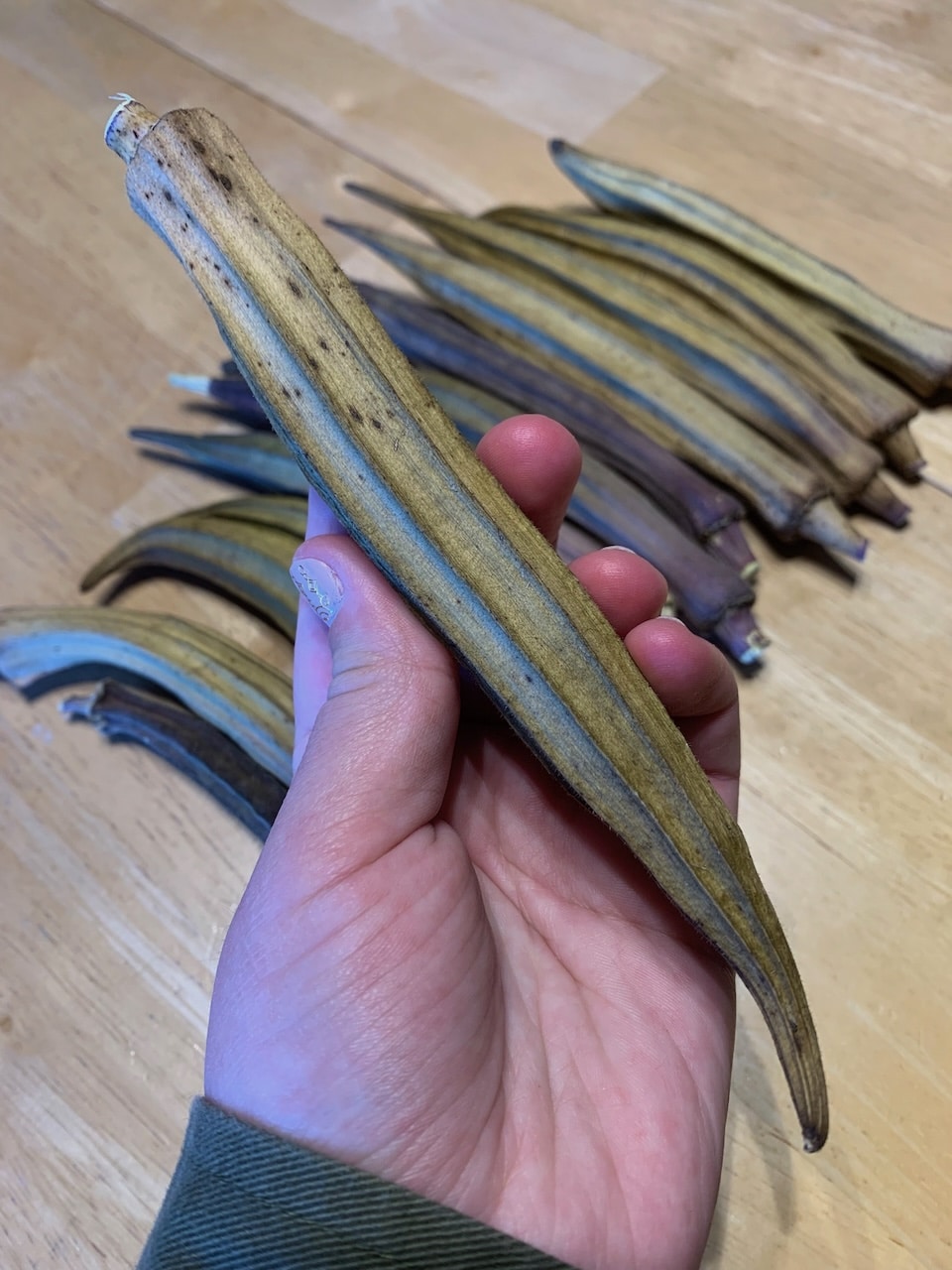Okra is a bit of a controversial vegetable. Some people adore it, while others can’t stand the texture, which can be slimy. But something even okra lovers and haters alike can agree on is that it’s a marvelous material for crafts. The pods have a unique structure, and when sliced horizontally, reveal a lovely star shaped center. Some people even grow the plant just for the flowers, which are large and a buttery color. The most common way to use okra in any craft is to dry it. Just like using a dehydration method for food preservation, dried okra lasts a long time. Drying okra leaves the pods with tighter structures. Coupled with the loss of moisture, dried okra pods are extremely sturdy.

I happen to love okra and decided to grow some this year. I originally grew my plants for eating, but as the growing season comes to a close, I want to preserve the pods. I like to dry mine in a food dehydrator. I attempted to dry some on the plant itself, which saves electricity and produces viable seeds. I then finished these pods in the dehydrator to protect them from our early frosts. Thankfully, there are many methods for drying okra pods.
Drying okra pods is quite simple, no matter the route you take. They can be left to dry on the plant, or dried in an oven, an air fryer, a dehydrator or hung in the sun. There’s a lot of information on how to dry pods with the various methods online, such as this article. I use a dehydrator because the model my family has comes with a fruit and vegetable setting. All I have to do is wash and dry the pods, and throw them in the dehydrator. Once the pods are dry, I store them in a paper bag. You know the pods are dry when they feel hard to press, and sound a bit like sticks when tapped together.

Dehydration removes most of the moisture content from foods. The lack of moisture in the finished product prevents bacteria from growing. Since all of this moisture has been removed, the result is a much smaller, lighter piece of sustenance. Okra is unusual because as the pod grows, it becomes tough and woody. I can confidently write from experience that woody okra pods are not fun to eat. As pods mature, they lose their tender quality and turn extremely hard.

Pods that you might see in your local grocery store or farmers’ market are always under four inches long, and often even smaller. Though much better for eating, this is not a good size for okra crafts. If I purchased okra pods at the perfect stage of ripeness for eating, the dehydrated product would be tiny. Growing an okra plant or two yourself is your best bet for big craft pods. I let my pods get as large as possible, usually about six inches long for the particular type that I grow. Bees also love okra flowers, so you’ll have a beautiful plant that produces large pods and attracts pollinators.
There are endless crafting possibilities with dried okra. To make a natural star stamp, simply cut the pod in half horizontally and dip the cut end in paint. The entire pod can also be painted to create cute decorations. Your imagination is the limit! A quick Google search can provide so many ideas – from okra Christmas ornaments painted to look like Santas and nutcrackers, or Halloween party favors like ghosts and witches. Wreaths made from or accented with dried okra are beautiful pieces of summer and fall decor, too.

Okra is such a versatile vegetable, that even if you don’t enjoy eating it or are a bit apprehensive about trying it, it’s hard not to find a use for the pods. So many crafts are made unique by adding the unusual structure of an okra pod. I encourage you to grow a couple okra bushes for crafts whether you love, dislike or haven’t tried this veggie. There are countless crafting opportunities. What will you make?
"Anna" is a teenage girl who loves to write, read, and do just about anything artsy. She enjoys writing about nature crafts and her experiences while learning to hunt and cook wild game. Anna firmly believes that backyard chickens lay the best eggs and that spending time outside with her flock every morning will start the day off happily. She is extremely grateful to her best friend, who inspired her to really take writing seriously. You can find her lost in her latest idea or listening to her sister "Rose" read book quotes. View all posts by Anna